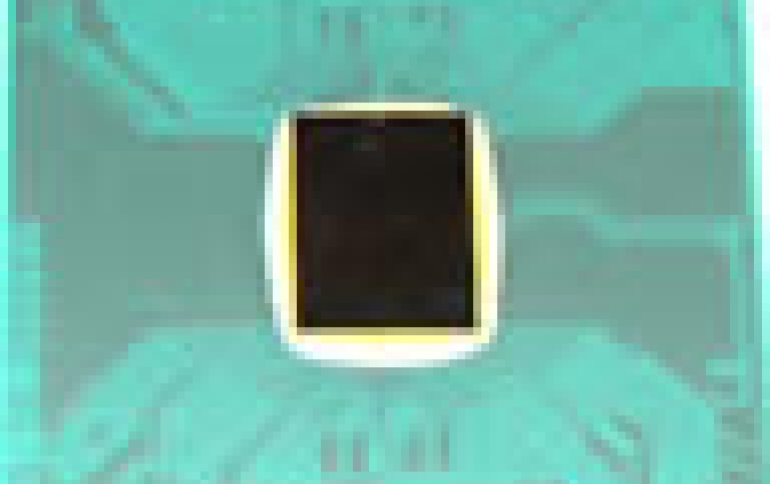
Intel Touts Power of New Laptop Chip
Intel said on Tuesday its next-generation platform for laptop computers will use 25 percent less power while boosting performance, helping it stay on top of the fast-growing market.
The overhaul of Intel's Centrino technology, code-named "Napa," comes as the world's largest chipmaker is getting a boost from laptop sales, which are growing faster than the overall computer market.
At the heart of Napa is Intel's new Yonah microprocessor, which will be its first mobile chip to have two cores and will be built with the latest technology that etches circuitry more than 100 times thinner than a human hair.
That means the Napa system -- covering the Yonah processor, its attendant chipset and a new wireless chip -- will use 28 percent less power while performing 68 percent better than its predecessor, Keith Kressin, Intel's marketing chief for mobile platforms, told reporters.
Meanwhile, lower power usage is becoming more important as users demand longer battery life and ever-slimmer laptops, which pose an engineering challenge since smaller machines are less able to dissipate the processor's heat.
Analysts said Napa will be a crucial product for Intel when it launches in January.
Napa comes as Intel's chief rival, AMD, makes inroads in laptop computers with its line of Turion chips and is looking to one-up Intel next year by being the first to launch a 64-bit mobile processor.
A 64-bit processor is able to process chunks of data twice as large as a standard 32-bit chip. That will be important when Microsoft launches the next version of its Windows operating system, which will be optimized for 64-bit.
"Napa will make Intel a more capable competitor against AMD's products. AMD is having a modicum of success in mobile," said Nathan Brookwood, head of semiconductor research firm Insight 64.
Intel also said it would devote serious marketing muscle behind its upcoming "Viiv" platform that it hopes will spur buying of a new consumer-oriented PC designed to sit in a living room and download, store and play movies and music throughout a home.
Executives declined to say how much Intel would spend to market Viiv, set to launch early next year, but said the campaign would be similar to the one for Centrino that cost hundreds of millions of dollars.
At the heart of Napa is Intel's new Yonah microprocessor, which will be its first mobile chip to have two cores and will be built with the latest technology that etches circuitry more than 100 times thinner than a human hair.
That means the Napa system -- covering the Yonah processor, its attendant chipset and a new wireless chip -- will use 28 percent less power while performing 68 percent better than its predecessor, Keith Kressin, Intel's marketing chief for mobile platforms, told reporters.
Meanwhile, lower power usage is becoming more important as users demand longer battery life and ever-slimmer laptops, which pose an engineering challenge since smaller machines are less able to dissipate the processor's heat.
Analysts said Napa will be a crucial product for Intel when it launches in January.
Napa comes as Intel's chief rival, AMD, makes inroads in laptop computers with its line of Turion chips and is looking to one-up Intel next year by being the first to launch a 64-bit mobile processor.
A 64-bit processor is able to process chunks of data twice as large as a standard 32-bit chip. That will be important when Microsoft launches the next version of its Windows operating system, which will be optimized for 64-bit.
"Napa will make Intel a more capable competitor against AMD's products. AMD is having a modicum of success in mobile," said Nathan Brookwood, head of semiconductor research firm Insight 64.
Intel also said it would devote serious marketing muscle behind its upcoming "Viiv" platform that it hopes will spur buying of a new consumer-oriented PC designed to sit in a living room and download, store and play movies and music throughout a home.
Executives declined to say how much Intel would spend to market Viiv, set to launch early next year, but said the campaign would be similar to the one for Centrino that cost hundreds of millions of dollars.





















